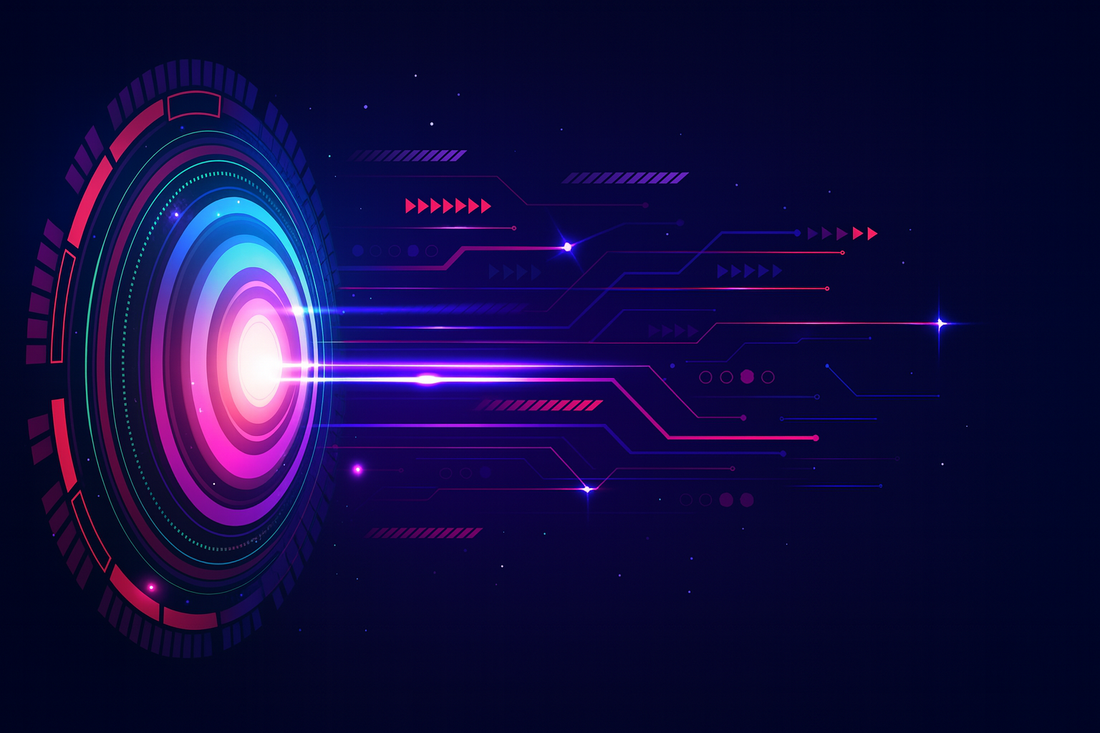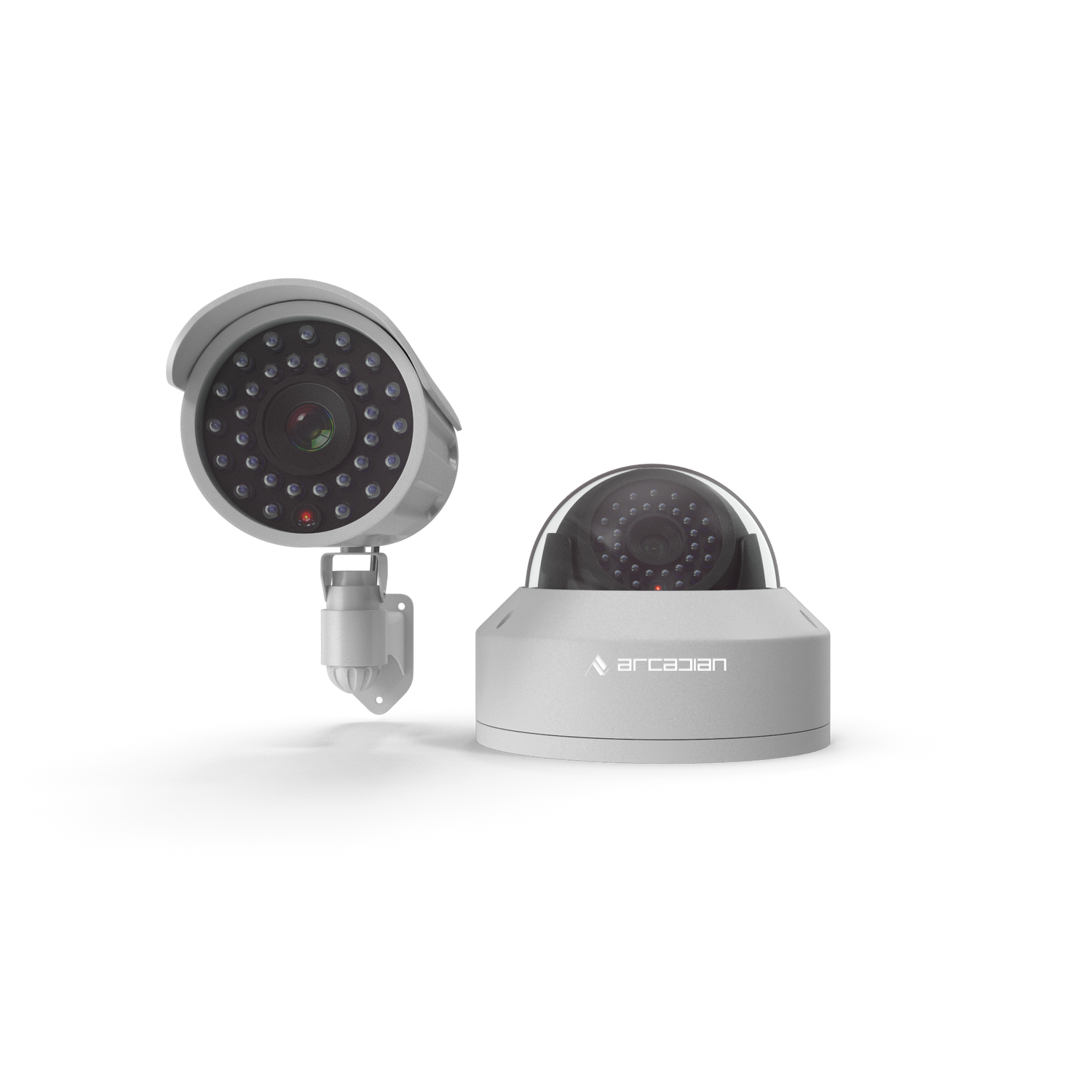Beyond Static Security: Why Every Vertical Needs Dynamic AI Surveillance
Legacy systems promise “AI” but deliver static, context-blind surveillance. This guide exposes industry-specific risks—and how ArcadianAI’s Ranger redefines security with adaptive, cloud-native intelligence.

Introduction
In 2024, businesses lost over $121 billion to theft, fraud, and operational disruptions linked to inadequate physical security systems (Forbes, 2024). Yet most organizations—from retailers to hospitals to data centers—still rely on static surveillance platforms built on outdated assumptions: fixed rules, inflexible edge AI, and “motion detection” masquerading as intelligence.
ArcadianAI was built to challenge this broken model. Unlike competitors such as Verkada, Genetec, Eagle Eye Networks, Milestone, Rhombus, Nest, or Ring, our Ranger platform doesn’t just “see motion”—it understands scenes and semantics across industries.
A tailgating incident at a data center isn’t the same as loitering outside a school. A forklift crash in a warehouse isn’t just movement—it’s a liability, an insurance risk, and a safety failure. A group gathering in front of a store might be friends waiting for a ride—or an ORC crew casing merchandise.
This blog is a vertical-by-vertical guide showing why legacy systems fail and how ArcadianAI’s adaptive AI provides dynamic, ROI-driven protection.
Quick Summary / Key Takeaways
-
Static AI = false alarms and blind spots
-
Every vertical has unique risks and psychology
-
Legacy VMS/NVR vendors fail at context and semantics
-
ArcadianAI Ranger adapts across industries, scenes, and seasons
-
Cloud-native design reduces CapEx, Opex, and risk exposure
Background & Relevance
Security can no longer be static because threats aren’t static.
-
Retail crime is up 21% YoY across North America (NRF, 2024).
-
Healthcare breaches & theft cost $11M+ per incident (IBM, 2024).
-
School shootings hit a 30-year high in 2023 (FBI, 2024).
-
Data center downtime costs average $9,000 per minute (Uptime Institute, 2024).
Yet NVR-locked, rules-based systems treat these dynamic, semantic-rich environments the same way: motion in, video out. That approach fails everywhere.
Core Exploration
Why Static Systems Fail Everywhere (Psychology of False Security)
-
Rules-based thinking — “If X then Y” cannot interpret intent.
-
Over-reliance on motion detection — wind, shadows, and rain trigger false alarms.
-
Edge-only analytics — limited by silicon, inflexible for upgrades.
-
Lack of semantic context — can’t tell if someone is waiting for an Uber or casing a store.
-
Siloed architectures — cameras are isolated; no cloud-native intelligence loop.
Psychologically, this creates false security confidence. Executives assume “we have cameras, so we’re safe.” But static AI simply records failure in HD. It documents loss—it doesn’t prevent it.
ArcadianAI Ranger flips this: adaptive semantics, intent detection, and vertical-specific baselining.
Retail Security
Retail crime isn’t shoplifting anymore—it’s organized retail crime (ORC) costing U.S. retailers $112 billion in shrink in 2023 (NRF). Groups hit Target, Walmart, CVS, Home Depot, and Nordstrom with coordinated theft.
Legacy Failure:
-
Genetec/Milestone require human monitors who miss patterns.
-
Verkada markets “AI loitering detection,” but can’t distinguish an Uber Eats driver from a booster-bag thief.
-
Static motion rules trigger when carts move too fast but fail to flag shelf-sweeping.
Psychology: Retail execs often think adding cameras = deterrence. Criminals know better—static AI can’t detect concealment or group dynamics.
ArcadianAI Difference:
-
Detects ORC staging behaviors (loitering in teams, distraction tactics).
-
Identifies concealment gestures (bag stuff, shelf-sweeping).
-
Provides ROI dashboard linking AI alerts to shrink reduction and labor optimization.
-
Integrates into existing EAS, POS, and guard patrol systems.
Reverse Thinking: Instead of “reducing shrink,” ArcadianAI reframes it as recapturing hidden profit by eliminating blind spots.
Healthcare Security
Hospitals are chaotic ecosystems. In 2024, U.S. hospitals lost $11M per breach/theft incident (IBM).
Legacy Failure:
-
Honeywell, Avigilon cameras tied to DVR/NVRs only detect motion.
-
Static AI can’t distinguish patient elopement vs. a visitor walking out.
-
PPE compliance failures go unnoticed.
Psychology: Healthcare execs think HIPAA = digital compliance, ignoring physical risks. Yet insider theft of meds and patient records skyrockets when surveillance is static.
ArcadianAI Difference:
-
Detects aggressive staff-patient interactions.
-
Monitors PPE compliance in restricted zones.
-
Identifies elopement risks (patients exiting without clearance).
-
Works with privacy-first anonymization for HIPAA/GDPR compliance.
Reverse Thinking: Instead of “more cameras = more liability,” Ranger turns cameras into risk-reduction and compliance tools.
Education & Campus Security
School shootings and campus violence are at 30-year highs (FBI, 2024). Schools spend billions on Verkada or Eagle Eye, but students and parents remain unsafe.
Legacy Failure:
-
Verkada bundles = static loitering detection.
-
Eagle Eye = cloud storage, weak analytics.
-
Can’t detect weapons brandishing before an event.
Psychology: Boards often believe cameras = optics for parents, not real protection. Criminals exploit this illusion.
ArcadianAI Difference:
-
Detects pre-incident behaviors: loitering, bag drops, casing.
-
Integrates into SRP (Standard Response Protocol) drills.
-
Provides incident replay with semantic tagging for law enforcement.
Reverse Thinking: Instead of “installing cameras to reassure parents,” schools should adopt AI that actually reduces risk windows.
Data Centers & Critical Infrastructure
Downtime costs $9K per minute (Uptime Institute, 2024).
Legacy Failure:
-
Static AI misses tailgating into server rooms.
-
Genetec and Milestone rely on guard response.
-
Cameras “see” but don’t interpret intent.
ArcadianAI Difference:
-
AI baseline for normal movement in corridors.
-
Detects piggybacking, unauthorized loitering near racks.
-
Links to SOC2/NDAA compliance reports.
Reverse Thinking: Instead of “guards + cameras,” ArcadianAI reframes cameras as insurance-grade uptime protectors.
Manufacturing & Warehousing
Warehouses lose billions annually to theft and accidents.
Legacy Failure:
-
Static cameras miss forklift crashes, pallet tampering.
-
Rules-based analytics can’t identify blocked fire exits.
ArcadianAI Difference:
-
AI detects unsafe behaviors (no PPE, speeding forklifts).
-
Prevents supply chain theft via semantic recognition.
-
Delivers insurance risk reduction reports.
Reverse Thinking: Instead of “security cost,” Ranger reframes as safety + operational efficiency driver.
Oil, Gas & Remote Sites
Pipelines, rigs, and mines are high-risk, remote environments.
Legacy Failure:
-
Static analytics fail in dust, fog, low light.
-
LVT/Zedcor towers rely on guards watching endless feeds.
ArcadianAI Difference:
-
Weather-adaptive AI trained on thermal + IR data.
-
Detects tailgating, tampering, intrusion even in harsh sites.
-
Cloud-native, reducing reliance on guards.
Reverse Thinking: Instead of “temporary towers,” Ranger reframes as permanent adaptive guardians.
Hospitality & Entertainment (1000 words)
Casinos, hotels, stadiums face fraud, theft, and trafficking.
Legacy Failure:
-
Milestone + Genetec systems miss card cheating patterns.
-
Verkada AI can’t detect trafficking cues.
ArcadianAI Difference:
-
Detects exploitation, over-serving, staff conflicts.
-
Links to compliance + incident review.
Reverse Thinking: Instead of “surveillance as evidence,” Ranger reframes as surveillance as prevention + compliance assurance.
Residential & Smart Home (1000 words)
Ring and Nest flood homeowners with false alerts.
Legacy Failure:
-
Motion alerts triggered by pets, raccoons, wind.
-
Static AI erodes trust—people ignore alerts.
ArcadianAI Difference:
-
Detects human intent vs. environment noise.
-
Differentiates delivery vs. burglary.
Reverse Thinking: Instead of “cheap motion alerts,” Ranger reframes as trustworthy AI guard that earns peace of mind.

Comparisons & Use Cases
| Vendor/Model | Approach | Weakness | ArcadianAI Advantage |
|---|---|---|---|
| Verkada (VSaaS) | Static AI on edge | Context-blind, privacy concerns | Adaptive cloud-native AI |
| Genetec (VMS) | Rules-based + guards | High false alarms, CapEx heavy | AI false-alarm filtering |
| Eagle Eye Networks | Cloud storage focus | Weak analytics, cost scaling | Cloud-native AI at scale |
| Milestone (VMS) | On-prem integration | Limited AI, hardware lock-in | Camera-agnostic AI layer |
| Nest / Ring (Consumer) | Basic motion alerts | False positives, privacy issues | Semantic, intent-driven alerts |
| ArcadianAI Ranger | Adaptive AI guard | N/A | Dynamic, semantic AI for all verticals |
Common Questions (FAQ)
1. Why do legacy NVR/VMS systems fail with AI?
Because they’re rules-based and context-blind. Motion ≠ intent.
2. Can ArcadianAI integrate with existing cameras?
Yes, Ranger is camera-agnostic—Axis, Hanwha, Hikvision, Lorex, etc.
3. How does adaptive AI reduce false alarms?
By analyzing semantics and intent, not just movement.
4. Which industries benefit most from ArcadianAI?
Retail, healthcare, education, data centers, manufacturing, oil & gas, hospitality.
5. Is ArcadianAI compliant with NDAA, GDPR, and HIPAA?
Yes—our AI respects compliance frameworks and privacy mandates.
Conclusion & CTA
Static surveillance is the illusion of security. Across verticals, legacy vendors recycle the same false promises: motion detection, “AI analytics,” edge processing. But the world is dynamic, threats are semantic, and intent matters.
ArcadianAI Ranger transforms cameras into adaptive, cloud-native guardians that understand scenes, people, and risk. From retail crime to patient safety to data center uptime, Ranger makes security smarter, scalable, and ROI-driven.
See ArcadianAI in Action → Get Demo – ArcadianAI
Security Glossary (2025 Edition)
-
Adaptive AI — Machine learning models that evolve with context and scene dynamics.
-
Edge AI — AI models running on devices, limited by hardware constraints.
-
False Alarm — Non-critical events incorrectly flagged by legacy systems as threats.
-
Genetec — Legacy VMS provider with rules-based analytics and on-prem focus.
-
Loitering Detection — AI identifying suspicious lingering in sensitive zones.
-
Milestone — VMS vendor reliant on static analytics and guard intervention.
-
NDAA Compliance — U.S. regulation restricting non-compliant surveillance hardware.
-
NVR (Network Video Recorder) — On-prem hardware storing video streams.
-
ORC (Organized Retail Crime) — Coordinated retail theft costing billions annually.
-
Ranger — ArcadianAI’s adaptive AI-as-Guard platform.
-
Scene Semantics — Understanding not just movement, but context and intent.
-
Static AI — Fixed, rule-based analytics unable to adapt.
-
Tailgating — Unauthorized entry by following an authorized person.
-
Thermal Camera — Imaging device detecting heat signatures.
-
Verkada — VSaaS competitor criticized for static analytics.
-
VSaaS (Video Surveillance as a Service) — Cloud-hosted video platforms offering subscription-based security.

Security is like insurance—until you need it, you don’t think about it.
But when something goes wrong? Break-ins, theft, liability claims—suddenly, it’s all you think about.
ArcadianAI upgrades your security to the AI era—no new hardware, no sky-high costs, just smart protection that works.
→ Stop security incidents before they happen
→ Cut security costs without cutting corners
→ Run your business without the worry
Because the best security isn’t reactive—it’s proactive.







